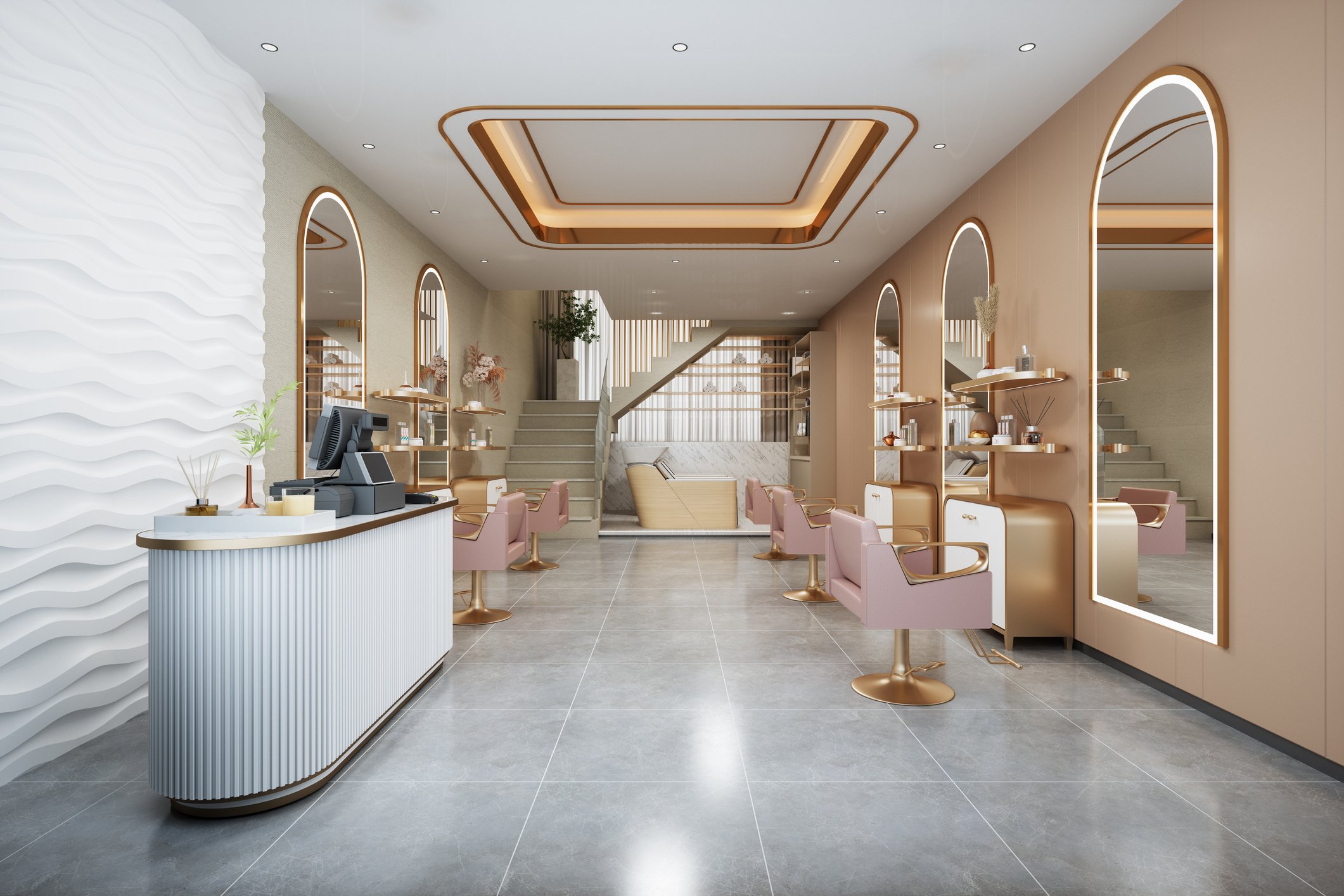Blog • Best Practice
5 Ways Beauty Pros Are Using Tech to Make Bank

By Shanalie Wijesinghe . Sep.16.2022
Share Article
Salons, influencers, and brands are using technology to their advantage and earning cash along the way.
Beauty pros know they have to win over the hearts and minds of their clients to keep them coming back, which means introducing a wow factor to salons. Thanks to technology, stunning clients with cutting-edge experiences is easier than ever, but there’s no cut-and-dry solution for the perfect salon tech setup. Luckily, the beauty industry is filled with innovators who know how to use tech to build their brands. Here’s how they’re doing it.
Ted Gibson’s “Starring” shows the future of salons
You don’t need a crystal ball to see where the beauty industry is headed. Instead, look at Starring by famed stylist Ted Gibson, who has crafted one of the most technology-driven salons on the planet with the help of his husband, celebrity colorist Jason Backe. Starring is a visually striking place, with walls inspired by hair blowing in the wind and pastel colors illuminating the interior. The salon is voice-activated, featuring an entertainment lounge instead of a traditional waiting room. Personal pods, which feature Alexa speakers and a 10-inch Fire Tablet, give clients a private space where they can have their services performed.
The technology-infused space is part of a clever strategy. Gibson made a prudent point about why technology is becoming so important while speaking to The Hollywood Reporter when Starring was announced: “Women have a choice now — she can go through five different apps and have someone come to her house to have her hair done. So if she’s going to leave her house, it has to be an exceptional experience.” Beauty pros aren’t just using technology to earn more, they’re competing with it. Gibson already has clout — his work runs about $2,000 and can be seen on celebrities like Lupita Nyong'o and Melissa McCarthy — but his personalized salon experiences will give clients a reason to keep coming back even as on-demand style experiences boom.
Try-on tech is shaping trends
Major brands are changing the way beauty enthusiasts interact with new products, using augmented reality to let clients try on apparel and cosmetics. Anyone with a smartphone can use tools like e.l.f. Cosmetic’s “Try It On” button to see what they’d look like in lipstick, eyeliner, and other cosmetics. It’s no surprise that so many companies are following suit, as virtual try-on has been proven to increase sales. Who knows, the tech might even result in fitting rooms going the way of the dodo. For the beauty biz, the odds of customers being dissatisfied with their new looks — haircuts, makeup, or even Medspa procedures — are lower when salons use try-on tech before performing services. Satisfied customers are returning customers, and that means more revenue, a bigger business, and more profit.
Using social media to inspire an empire
If you’ve watched Netflix’s Bling Empire, you’re probably familiar with Guy Tang. Tang’s awkward discovery during an at-home spa day netted him some time in the Netflix spotlight, catapulting him into the beauty industry’s heart. But Tang hasn’t just used his time as a beauty industry beau to sell cosmetics. By maintaining an active social media presence, he’s built a personal brand as an educator for other beauty bosses. Tang only sells Mydentity products to licensed professionals, for whom Tang has cultivated a tightly knit community through social media platforms like YouTube, Instagram, and Twitter.
It’s not uncommon for beauty professionals to have communities and share tips, but Tang has put extra effort into making every member feel cared for with his videos, offering granular explanations of which Mydentity dyes are best for specific hair colors. Tang is a practical example of how genuinely caring for customers and having a marketable personality result in ultra-successful beauty brands. He can leverage his appearance on Bling Empire to further grow his reach on social media, and that will ultimately result in more stylists purchasing his products. And by focusing on stylists exclusively, Tang ensures that his clientele will have a consistent need for his products.
Meet the beauty entrepreneurs mastering crypto
The crypto craze has invaded cosmetics, and beauty pros are taking advantage. So far, Huda Kattan, founder of HudaBeauty, has been one of the biggest advocates for cryptocurrencies and NFTs, educating her followers on the basics of the technology and how to invest. Kattan hasn’t launched her own NFT initiative, but she has invested in some that generate royalties for her, like World of Women, helping her earn a pretty penny. Even those that aren’t interested in crypto can learn a thing or two about promoting products from Kattan’s crypto strategy, as Kattan knows all about promoting herself and her business ventures. The beauty icon claims to have never spent money on advertising while growing her company to a $1.2 billion valuation in 2017.
Using software to keep clients happy
From beginners to pros, everyone in the beauty biz needs to know how to manage client relationships. Keeping track of services, supplies, and email marketing is a big part of the job, but one that takes a lot of time and effort without the right tools. Luckily, technology is making relationship management easier, helping beauty pros lower client cancellations, manage their schedules, and keep track of their inventory.
Boulevard offers a complete solution for any beauty business’ scheduling, inventory, and marketing needs. Built to scale with salons and spas of any size, Boulevard’s platform helps you keep clients satisfied, your back bar full, and more services booked. If you want to know more about how Boulevard can grow your business, get a demo today.
Finding the right tech stack to support your growth goals can make or break your business. Don't worry, our Building Your Beauty Tech Stack Guide is here to help! Get your free copy now
Sign up for weekly blog updates.
